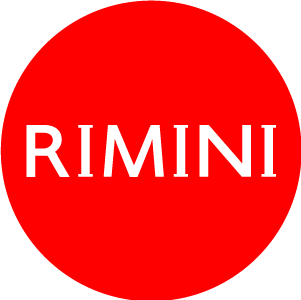In the Museum and round the city
On the occasion of the exhibition“Caravaggio and other Seventeenth-Century Painters” at Castel Sismondo, the City Museums of Rimini enriches their proposals of tours to discover the city’s rich historic and artistic heritage with a path through the seventeenth century paintings, situated in City venues and in the works preserved in the Museum.
In the City Museum
The rich heritage of paintings in the City Museum shows how the languages of art, which developed in the main cultural capitals, appears in works of the local artists. Altarpieces and pictures reveal ties with Rome and Bologna and the Venetian influence. From the territories of Venice came some paintings by Giovan Battista Langetti and Francesco Maffei while from Bologna arrived more classical works such as those by Guercino, the “Visione di San Girolamo” (1641) and the “Sant’Antonio di Padova (1659). The arrival of artistic works from Bologna is also evidenced by important altarpieces in the churches “Chiesa dei Servi” and the church “Sant’Agostino”.
In the Museum you can admire other paintings by the two leading artists of the seventeenth-century painting in Rimini: Guido Cagnacci (Santarcangelo di Romagna 1601 - Vienna 1663) and Giovan Francesco Nagli, better known as “Centino” (doc. in Rimini from 1629 to 1675). The influence of Caravaggio's works is indeed the basis of Cagnacci's paintings: the realism of the figures emerging from a dark background thanks to a masterful use of light.
In the city
The visit in the Museum will be completed with an itinerary that starts from the adjacent church "San Francesco Saverio" (Suffragio) built between 1718 and 1740 by the Jesuits. Here a painting by Vincent Spisanelli (ca 1650) and the “Tre martiri gesuiti del Giappone” by Guido Cagnacci (1635) are on show.
Beyond the Tiberius Bridge the visit continues in the church of San Giuliano. The church has medieval origins but now it has the later sixteenth century shape. Here you can admire works from seventeenth-century coming from the neighbor regions Veneto and Emilia.
Going through the city, past the Arch of Augustus, you reach the church of San Giovanni Battista (1573) which was rebuilt in the eighteenth century. The church had an important role in Guido Cagnacci’s life and here you’ll find some of his paintings such as “La Vergine con il Bambino” (ca 1630) and “La Trinità e santi protettori di Rimini (1611)
On the way to the discovery of the seventeenth century paintings, you will also focus on places in Rimini with artistic works from this period such as the town square (Piazza Cavour), which has at its center the statue of Pope Paul V Borghese. Although the seventeenth century was a difficult period because of political and social issues, Rimini has had a brilliant season of art and culture. Other signs of this artistic heritage is the Temple of Sant’Antonio in Piazza Tre Martiri, in memory of the Eucharist miracle, which was rebuilt after the earthquake in 1672 and Palazzo Gambalunga, already library and venue for students, the third public library in Italy.


